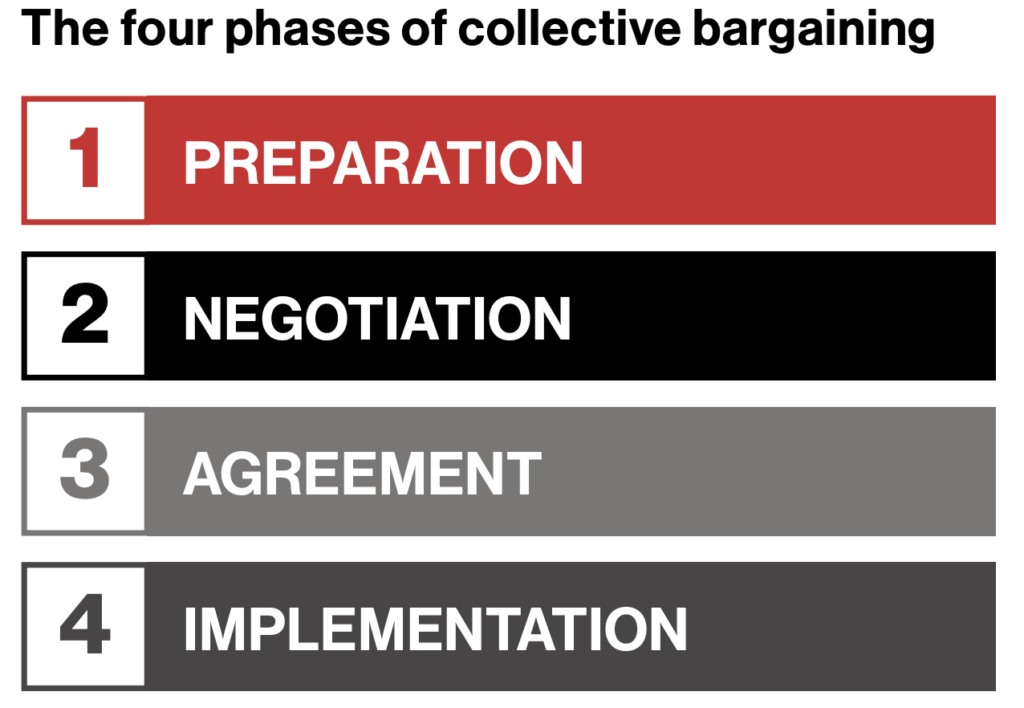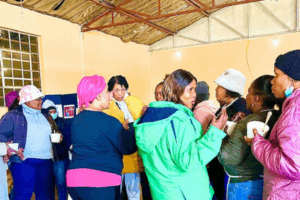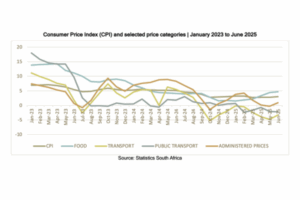ILO Convention 190 (C190) and Recommendation 206 (R206) outline a roadmap to end violence, harassment, and discrimination in the world of work. C190 enables trade unions to adopt a gender-transformative approach that raises awareness, changes behaviours, creates equal workplace norms and culture and implements policies to eliminate violence and harassment.
Public sector workers often feel undervalued by the communities they serve, leading to stress, anxiety, lowered morale, and productivity issues – directly impacting the quality of public services.
Trade unions expect the government, as an employer, to ensure a healthy work environment and effective public service. Article 9 of C190 requires governments to adopt laws and regulations obligating employers – including the government in the public sector – to take action against violence and harassment in the world of work, including gender-based violence and harassment (GBVH).
Employers and unions share responsibility for developing inclusive, integrated, and gender-responsive approaches that prevent and address violence and harassment in the world of work.
Practical steps for unions to implement C190 and R206 in the workplace
Step 1: Assess union knowledge on violence and harassment
"An important starting point is to identify our assumptions and to try to establish how accurate they are. Discussions in meetings and sharing of stories and anecdotes are ways of getting a deeper understanding of the context. What is key to this process of deepening our understanding are the questions we ask of ourselves and of each other."
- PSI Practical Guide for Implementing ILO Convention 190 in Public Sector Workplaces
Scope the workplace
Who is most affected by violence and harassment? For example, women who experience multiple types of discrimination, healthcare workers subject to verbal abuse, and teachers facing third-party violence from students or parents.
What forms do violence and harassment take? C190 defines violence and harassment in the world of work as a range of unacceptable behaviours, practices, or threats – isolated or repeated – that aim to, or are likely to, cause physical, psychological, sexual, or economic harm, including gender-based violence and harassment.
Where and when does harassment occur? According to Article 3 of C190, violence and harassment in the world of work include incidents that occur during work-related activities, such as commuting, at employer-provided accommodation, or during online communications. For example, healthcare workers face high levels of verbal abuse, municipal workers experience impacts from service delivery protests, which affect women and men differently, and LGBTI+ workers endure teasing and derogatory remarks.
Information sources may include, comments made in informal spaces, complaints raised by workers, or personal experiences, such as being a victim of workplace harassment as a worker leader.
Gauge worker attitudes and responses to violence and harassment
To understand workers’ views on violence and harassment, ask open-ended questions and listen closely to their responses.
An example of an open-ended question: I know many workers have been victims of harassment by the public and workers. My question is what is stopping workers from raising these issues with management or with the union?
Consider the following when opening a discussion on violence and harassment:
- Build trust – You could show that you and the union understand the issue and are committed to addressing it.
- Use familiar spaces where workers feel represented.
- Engage management to find out what they know about harassment levels.
Step 2: Create safe spaces for speaking out
Safe spaces – whether formal wellness programs or informal union support – help workers, particularly women and LGBTI+ individuals, to feel physically and emotionally secure. Safe spaces enable survivors to share their experiences without fear or judgment.
Features of a safe space
- A space where people feel supported and respected.
- A space to discuss, process, and heal from trauma and stress.
- A space to raise your deepest concerns and ask sensitive questions.
- A space for dialogue that enables mutual learning.
- A space free from emotional and physical threats.
- A space that is private and confidential.
Union leaders support not only survivors but also those impacted, those who may unknowingly contribute to harassment, and those hesitant to act.
The actions workers take themselves are key to creating a workplace free of violence and harassment. This includes improving their attitudes and behaviours, building positive relationships with colleagues, bargaining with employers, and advocating for policies and resources that promote a safe environment.
Strategies for creating safe spaces for workers to speak out and take action: Useful videos to watch:
Step 3: Define what it means to ensure the safety and security of workers in the world of work.
C190 redefines the “world of work” to include spaces beyond the traditional workplace. For public sector workers, this means addressing violence and harassment in all settings linked to their roles, from the commute and employer-provided accommodation to virtual communications.
When evaluating the world of work, keep in mind the various areas and interactions where violence or harassment might happen. The goal is to create safe workplaces where public workers find allies and have access to support programs, such as confidential counselling and referral services.
Step 4: Leverage bargaining power to address violence and harassment
Collective bargaining is one of the most effective tools unions can use to address violence and harassment in the world of work. Public sector workers deliver better services when they work in safe environments.
R206 (core principles) emphasises the right to collective bargaining at all levels to prevent and address violence and harassment, and, where possible, to reduce the impact of domestic violence in the world of work. The principle also promotes collective bargaining by encouraging the collection and sharing of information on related trends and best practices for negotiation processes and the content of collective agreements.

Violence and harassment as Occupational Safety and Health (OSH) issue
C190 and R206 emphasise that violence and harassment, including gender-based violence and harassment, should be addressed through OSH management. Article 12 of C190 calls for adapting OSH measures to cover violence and harassment, and where necessary, developing specific responses.
June 2022: The ILO added a safe and healthy working environment as its fifth fundamental principle and right, making occupational safety and health (OSH) no longer optional.
The OSH framework allows unions to take preventive action against workplace violence and harassment, including conducting risk assessments to identify potential threats to worker health and safety.
This article is extracted from Practical Guide for Implementing ILO Convention 190 in Public Sector Workplaces by Public Services International, produced in collaboration with the Labour Research Service and the Trade Union Solidarity Centre of Finland.
RELATED ARTICLES
What workers can demand for a safer workplace
- Health care workers at risk in a society that does not value the work of caring
- Strategies to end school-related gender-based violence: The experience of education unions in Africa
- Taking Action on Violence and Harassment against LGBTQI+ Workers (Facilitator Guide)
- Taking Action on Violence and Harassment against LGBTQI+ Workers (Participant Handbook)
- Workplace rights belong to everyone: Negotiating for inclusivity and against discrimination







